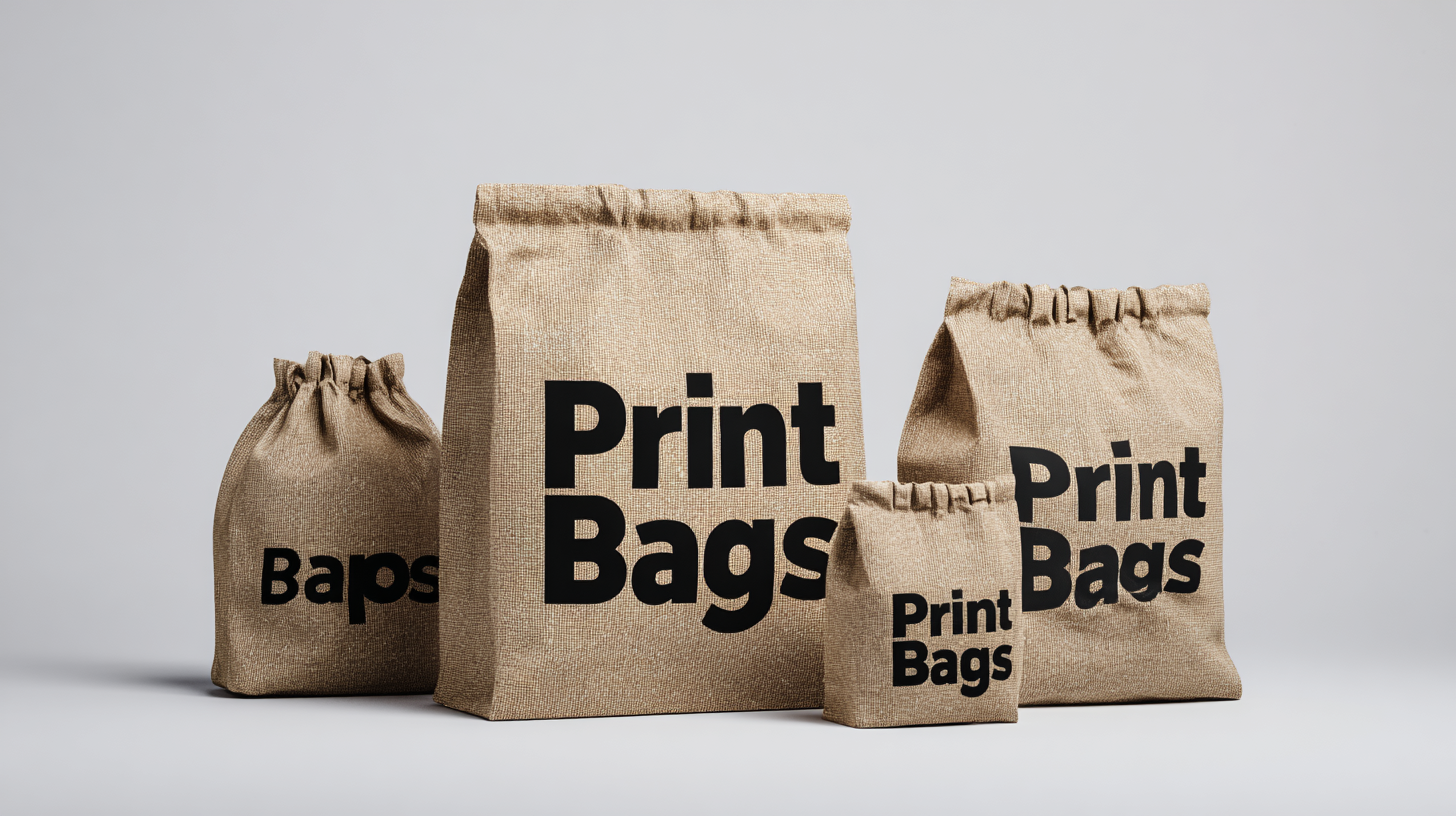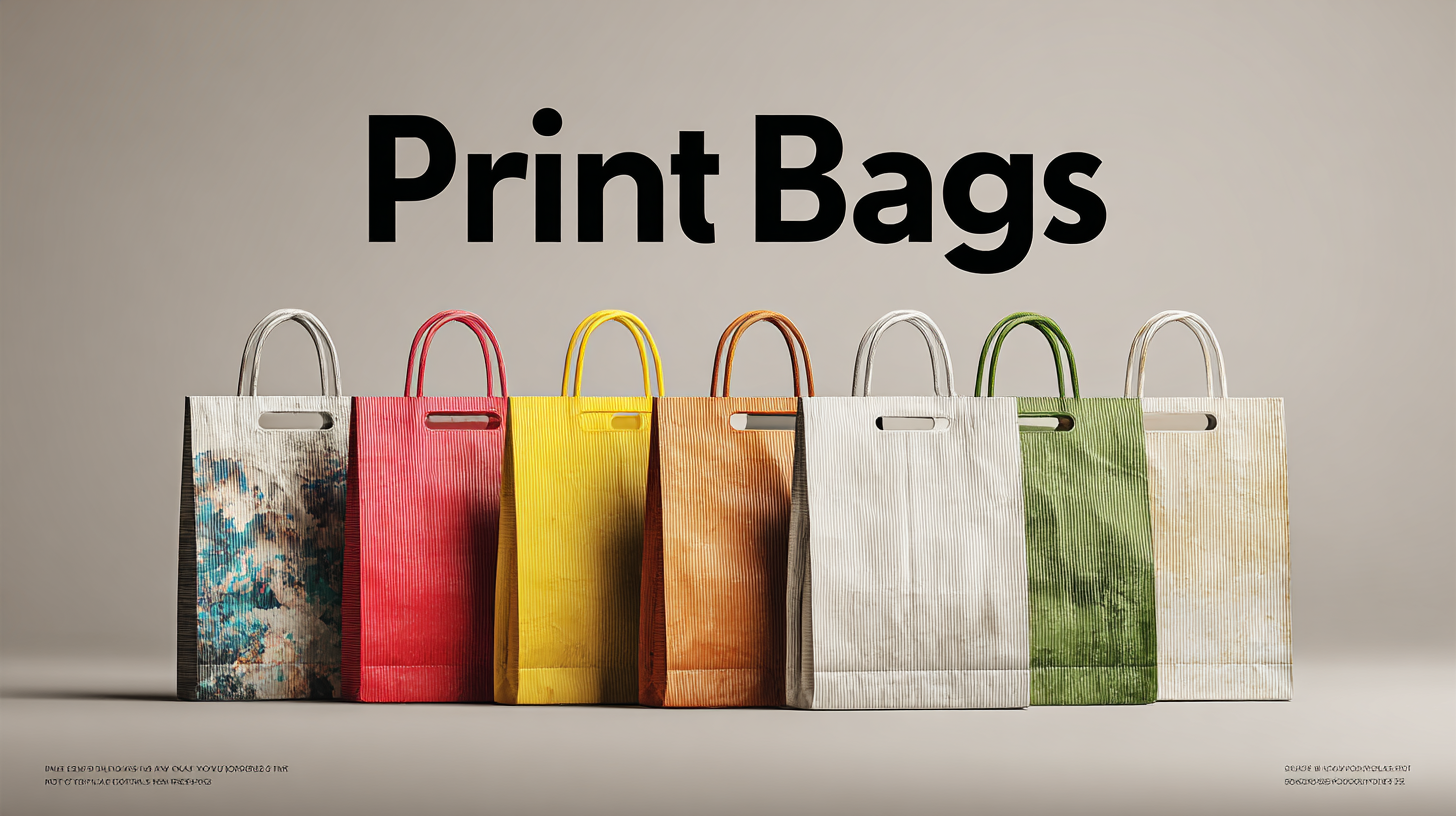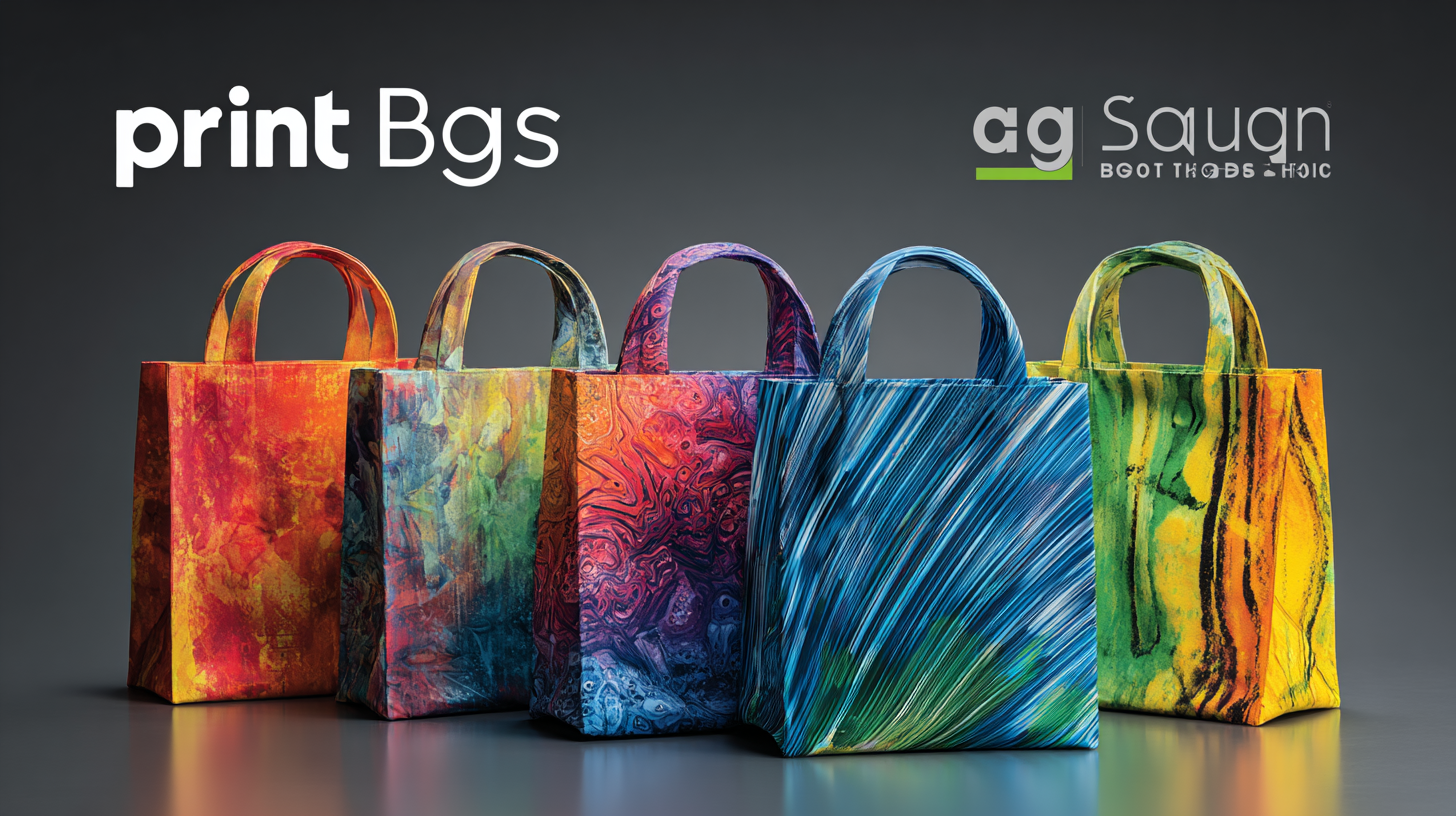Solutions for Sourcing the Best Print Bags: Your Global Procurement Guide
In the increasingly competitive landscape of retail and e-commerce, the demand for effective packaging solutions such as Print Bags has surged significantly. According to a recent report by Smithers Pira, the global market for flexible packaging is projected to reach $300 billion by 2024, with a notable portion of this growth attributed to customized and eco-friendly packaging options. Print Bags not only serve the functional purpose of carrying products but also play a critical role in branding and customer experience. By leveraging advancements in print technologies and sustainable materials, businesses can enhance their market presence while minimizing costs.

As companies strive to streamline their procurement processes, understanding the advantages of post-sale services and maintenance costs related to Print Bags becomes essential for making informed sourcing decisions. This guide aims to provide insights into the best sourcing strategies to effectively navigate the global procurement landscape for Print Bags, ensuring businesses remain competitive and responsive to consumer demands.
Overview of the Global Print Bag Market and China's Dominance in Manufacturing
The global print bag market has seen exponential growth, driven by increasing consumer demand for sustainable packaging solutions. Among the major players in this sector, China has established itself as a Dominant force in manufacturing. This dominance can be attributed to a combination of factors, including advanced production technologies, a vast labor pool, and favorable government policies that support export-oriented enterprises. As businesses worldwide seek reliable sources for print bags, China's capabilities in mass production and innovation make it an attractive option.
China's focus on sustainability and eco-friendly materials has also positioned it well in the global market. As consumers and businesses alike become more environmentally conscious, the demand for biodegradable and recyclable print bags is on the rise. Chinese manufacturers are not only meeting this demand but are also pioneering new materials and designs that cater to diverse markets. This adaptability enhances their competitiveness and enables them to serve various international clients effectively, making China a cornerstone of the global print bag supply chain.

Key Factors for Selecting Quality Print Bags from Chinese Suppliers
When sourcing print bags from Chinese suppliers, several key factors must be carefully considered to ensure quality and reliability.
First and foremost, understanding the material composition of print bags is crucial. According to a report by Grand View Research, the global reusable bags market is projected to reach
$218 billion by 2025, primarily driven by demand for eco-friendly materials. Chinese suppliers often offer a variety of options including biodegradable plastics, cotton, and jute,
so it’s important to inquire about the specific materials used in manufacturing to meet sustainability goals.
Another significant aspect is the supplier's certification and compliance with international standards. A study from the World Trade Organization indicates that about
40% of trade disputes arise from product quality concerns. Ensuring that your chosen supplier adheres to standards such as ISO 9001
for quality management can minimize risks associated with product defects. Additionally, it's beneficial to request samples to evaluate print quality, durability, and overall workmanship before making a bulk order.
By focusing on these factors, businesses can source print bags that not only meet their specifications but also align with global sustainability trends.
Evaluating Sustainability Practices in Print Bag Production
As the demand for eco-friendly packaging solutions rises, evaluating sustainability practices in print bag production becomes crucial for brands aiming to minimize their environmental impact. Recent industry reports show that approximately 79% of consumers are willing to change their shopping habits to reduce environmental impact, highlighting the importance of sustainable sourcing. Companies need to prioritize suppliers that adopt sustainable materials and processes, such as biodegradable films and recycled paper products, which significantly reduce carbon footprints.
To ensure that your sourcing aligns with sustainability goals, consider the following tips: First, assess your suppliers' certifications, such as FSC (Forest Stewardship Council) or GRS (Global Recycle Standard), which indicate adherence to responsible sourcing practices. Second, engage in conversations with suppliers about their waste management practices and the lifecycle of their products. Reports indicate that supply chains implementing circular economy principles can lead to cost savings of up to 20% while enhancing brand reputation.
Additionally, ensure that your print bags are designed for reuse or recyclability. Research shows that incorporating reusable bags can cut plastic waste in half for an average consumer. By partnering with suppliers who prioritize sustainable innovations, you can not only appeal to eco-conscious consumers but also contribute to a healthier planet.
Evaluation of Sustainability Practices in Print Bag Production
Cost-Effectiveness: Understanding Price Structures in Global Print Bag Procurement
In today's fast-paced market, understanding the price structures in global print bag procurement is essential for businesses aiming for cost-effectiveness. Not only do price models vary significantly between suppliers, but they are also influenced by several factors including material costs, shipping fees, and regulatory compliance. As the demand for sustainable materials grows, companies are increasingly focused on how these elements affect their overall cost structure. For instance, the incorporation of eco-friendly materials can elevate initial costs but may lead to long-term savings through enhanced brand loyalty and market differentiation.
Furthermore, the procurement of promotional products, including print bags, is closely linked to broader marketing strategies. As businesses strive to elevate customer engagement and brand visibility, making informed decisions about sourcing becomes vital. Leveraging procurement intelligence reports can provide insight into emerging technologies and supplier rankings, enabling procurement teams to optimize their purchasing processes. By adapting to industry trends, such as the sustainability wave, organizations can ensure they are not only competitive in pricing but also aligned with consumer expectations for responsible sourcing.

Navigating Trade Regulations and Import Considerations for Print Bags from China
When sourcing print bags from China, navigating trade regulations and import considerations is crucial for maintaining compliance and ensuring smooth transactions. According to a report by the International Trade Centre, over 90% of businesses in the packaging industry face challenges related to import regulations, particularly when dealing with overseas manufacturers. Understanding the specific documentation required, such as Certificates of Origin and compliance with the General Agreement on Tariffs and Trade (GATT), can save both time and money in your procurement process.
**Tip:** Always verify the compliance of the manufacturing process with international quality standards like ISO 9001. This not only ensures high-quality products but also mitigates the risk of customs delays.
Import duties and tariffs can vary significantly based on the type of print bags being sourced. A study by McKinsey indicates that small to mid-sized businesses often leave around 20% of potential cost savings on the table due to a lack of awareness about tariff classifications. Familiarizing yourself with the Harmonized System (HS) codes relevant to your products can enhance your negotiation power and help you achieve budget efficiencies.
**Tip:** Engage a local procurement expert or customs broker to assist with navigating the complexities of Chinese trade regulations. This can provide invaluable insights and streamline your sourcing process.
Solutions for Sourcing the Best Print Bags: Your Global Procurement Guide
| Dimension | Details |
|---|---|
| Material Types | Plastic, Cotton, Recycled Material, Jute |
| Common Sizes | Small (10x12 inches), Medium (15x18 inches), Large (20x25 inches) |
| Printing Options | Screen Printing, Digital Printing, Heat Transfer |
| Min Order Quantity (MOQ) | 500 - 1000 units, depending on material and customization |
| Shipping Methods | Sea Freight, Air Freight, Express Courier |
| Import Regulations | Tariffs, Safety Standards, Packaging Requirements |
| Lead Time | 3-6 weeks from order confirmation to shipping |
| Certifications | ISO 9001, CE, FDA compliance for food safety |